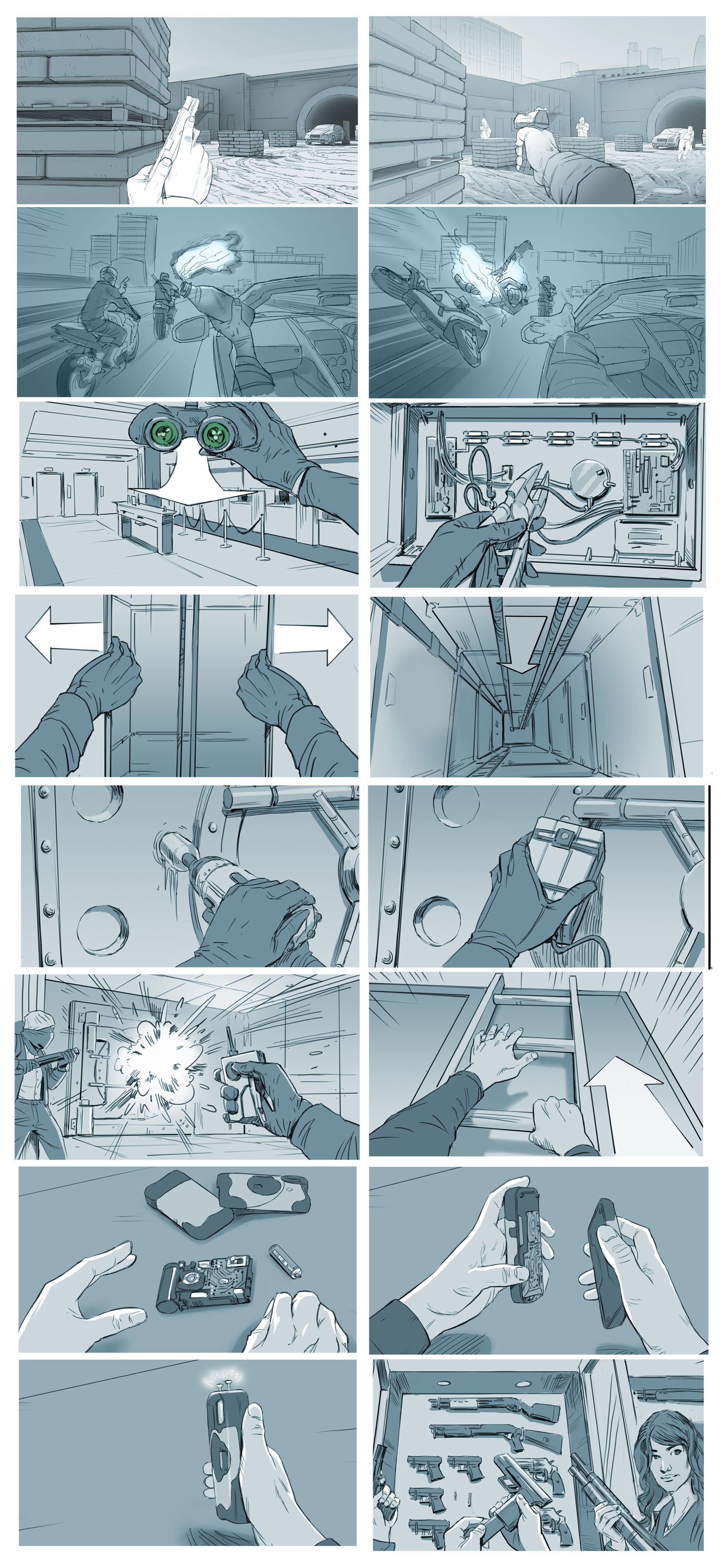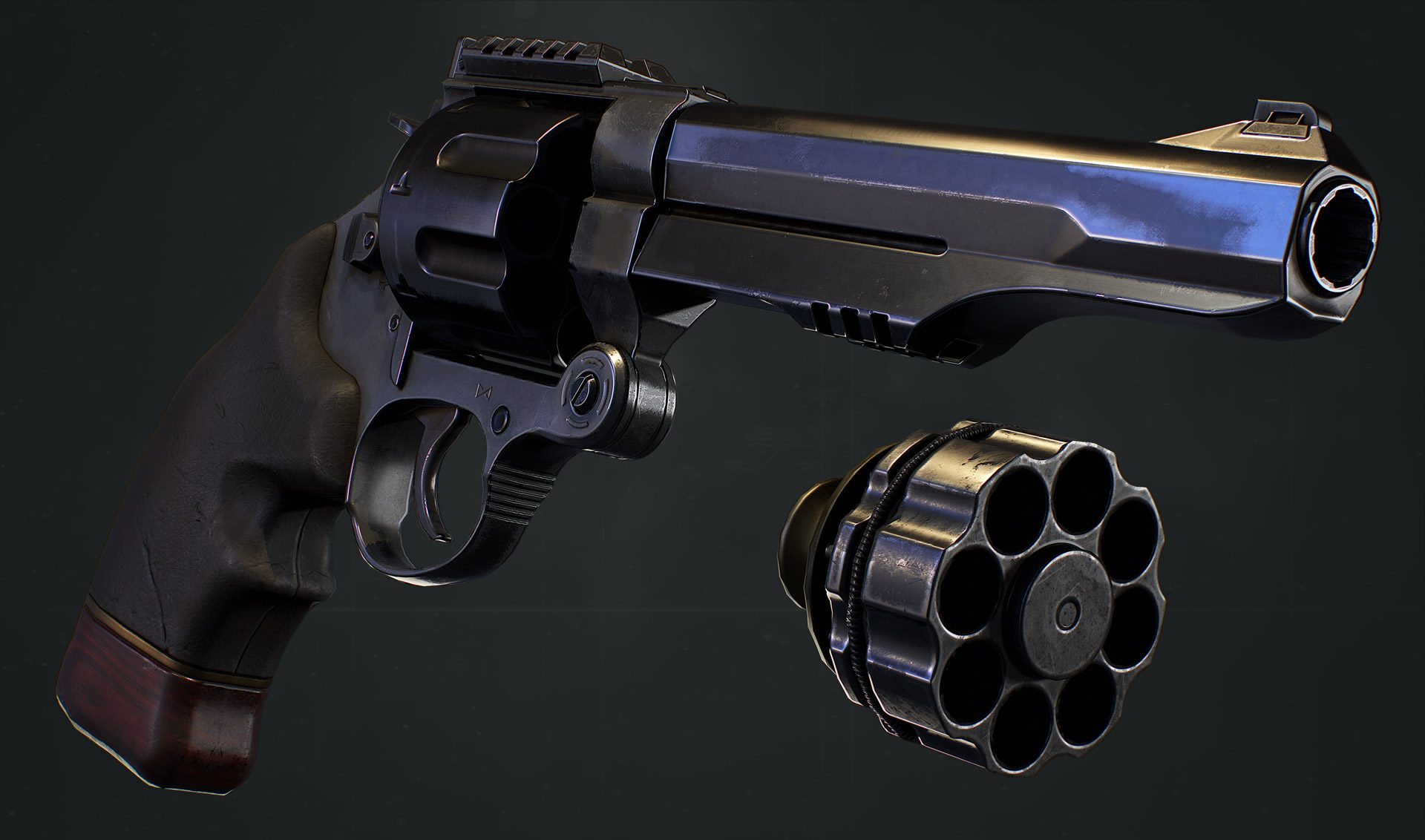As the studio behind the excellent PlayStation VR Worlds, Sony Interactive Entertainment’s London Studio has been at the forefront of VR game design since before PSVR even shipped back in 2016. With their latest title, Blood & Truth, the studio sought to deliver its first full-length VR title, and the result is an impressive action-filled journey that delivers the most convincing virtual characters we’ve seen in a VR game to date. To learn from the studio’s approach to VR game design—and to get a glimpse at the artwork that drove and resulted from the game’s development—we spoke with Stuart Whyte, Director of VR Product Development, and Anthony Filice, Art Director, both from Sony’s London Studio.
Editor’s Note: The big, beautiful pictures and exclusive artwork in this article are best viewed on a desktop browser with a large screen, or in landscape orientation on your phone. All images courtesy SIE London Studio.
Although, superficially, making VR games doesn’t seem far removed from making traditional games, truly native VR games aren’t so easily categorized among the non-VR game genres we think of today. You might be tempted to call Blood & Truth a ‘shooter’, but that really wouldn’t do the experience justice.
“I think there are genres and experiences that we have in our minds born out of decades of playing videogames in non-VR scenarios. When you move into VR, you’re effectively creating new genres,” said Stuart Whyte, Director of VR Product Development at Sony’s London studio. “I think we’re closest, in non-VR terms, to the ‘Action Narrative’ genre, but I also think that Blood & Truth, by the nature of the incredible immersiveness you get from PSVR, is much more an experiential game where you get to feel like an Action Hero.”

Delivering those action hero moments—like leaping from a collapsing building onto a crane, or paragliding into a restricted area—requires significant planning well before the first geometry of a level even gets modeled. The studio found that storyboarding ideas—creating thumbnail sketches of key moments—for major setpiece was “doubly important” for VR development; the team went so far as to use immersive storyboards which were drawn to be viewed in a VR headset.
“The storyboard allows us to rapidly iterate and test new ideas and angles without burning through lots of time and money. We actually created 360-degree storyboards which helped us place the player in the space and in the headset, and we were able to test things like composition, lighting and colour all in VR,” said Anthony Filice, Art Director at Sony’s London Studio. “Storyboarding [in game development] isn’t anything new, but being able to storyboard in VR is where it’s at. We’re exploring more and more ways to be able to visualize & test our ideas in VR before we actually commit to building. It’s super important to see how things are perceived from the point of view of the player, this way we can see and feel for ourselves what type of senses and emotions are triggered by what we’re creating first hand.”
“Understanding where characters are standing in the scene (rather than in the shot [as would be the case with non-VR]) is super important when the player is the camera,” Whyte said. “Typically, once we had finished the storyboarding stage, we would ‘block out’ using ‘grey box’ (simple basic geometry) the space, level, or scene within our engine so that we could get an early feel as to what the challenges would be and how best to approach.”
In VR, however, the little moments can be just as important as the big moments—interaction drives immersion, but it’s challenging to make a completely interactive world. Blood & Truth uses a node-based locomotion system which lets players move between predetermined points. As well as streamlining player movement, this smartly limits the scope of the objects which the player can potentially interact with. Instead of making every single object in the world interactive, London Studio thus only had to consider interactions of objects within arm’s reach of each node, allowing the studio to pay greater attention to a more tractable number of objects and interactions.
“Setting the visual pillars early on was super important. Those pillars were realism, storytelling and VR immersion. It’s true that the headset will give you some of the VR immersion for free, however to take the immersion to the next level, we had to make some tough calls on where to spend our [development time] for maximum user experience,” said Filice.

“Anything that the player interacts with in a meaningful way—like weapons, ‘box of delights’, and (intractable) clues—all have to be modeled and animated to the highest level. For example, we know the player will scrutinize the guns close up, so we decided to fully articulate and model them down to the screws. In addition to this, we pay particular attention and placed details as easter eggs for the player to find. In one scene, we placed chewing gum under a desk because we know that the player will probably want to look under the desk. There are lots of desks in the game, so I challenge you to find it!”


